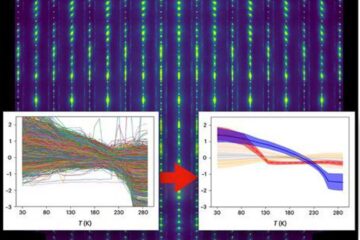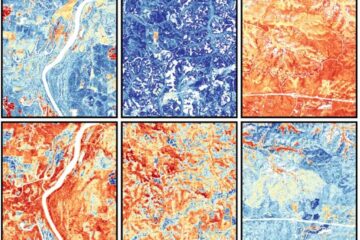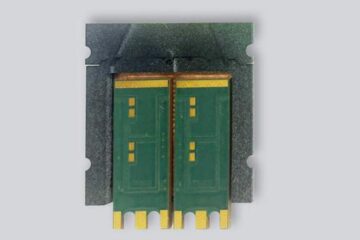New fluorescent proteins report electrical signals of brain cells

The protein was engineered by researchers at RIKEN to help analyze rapid electrical signals in populations of nerve cells and provides a unique window onto cellular-dynamics of neuronal webs. Further work with this protein is expected to dramatically extend the scope of research into brain function.
One of the key challenges in analyzing neural network dynamics is to monitor the activity of multiple neurons simultaneously. Voltage-sensitive fluorescent proteins (VSFP) make such analysis possible by encoding voltage sensors at the genetic level, enabling researchers to non-invasively target and visualize the activity of specific cell populations. VSFPs have, until now, suffered from interference with tissue background fluorescence and poor long-term expression in nerve cells.
A new series of red-shifted VSFPs, designed by a research team at the RIKEN Brain Science Institute, has overcome these limitations. By fusing the voltage-sensitive domain of a voltage-sensing phosphatase (Ci-VSP) to red-shifted fluorescent proteins, the researchers generated a series of VSFPs emitting different spectral colors. In a paper in the journal Chemistry & Biology, the researchers use these proteins to uncover details of the voltage-sensing mechanism in Ci-VSP, while also demonstrating the effectiveness of one variant (VSFP3.1_mOrange2) for analysis of electrical signals in hippocampal neurons.
The glimpse of the cellular-level dynamics of neuronal networks provided by VSFPs will vastly expand our understanding of information processing in the brain. By extending and clarifying the mechanisms of existing VSFPs, the new family of red-shifted proteins brings this potential one step closer to reality, enabling groundbreaking advances in understanding brain function.
Images associated with this press release are available on this link http://www.researchsea.com/html/article.php/aid/4828/cid/3/research/
new_fluorescent_proteins_report_electrical_signals_of_brain_cells.html
For more information, please contact:
Dr. Thomas Knöpfel
Laboratory for Neuronal Circuit Dynamics RIKEN Brain Science Institute
Tel: +81-(0)48-467-9740 / Fax: +81-(0)48-467-9739
Email: tknopfel@brain.riken.jp
Ms. Saeko Okada (PI officer)
Global Relations Office
RIKEN
Tel: +81-(0)48-462-1225 / Fax: +81-(0)48-467-9443
Email: koho@riken.jp
Media Contact
All latest news from the category: Life Sciences and Chemistry
Articles and reports from the Life Sciences and chemistry area deal with applied and basic research into modern biology, chemistry and human medicine.
Valuable information can be found on a range of life sciences fields including bacteriology, biochemistry, bionics, bioinformatics, biophysics, biotechnology, genetics, geobotany, human biology, marine biology, microbiology, molecular biology, cellular biology, zoology, bioinorganic chemistry, microchemistry and environmental chemistry.
Newest articles

Machine learning algorithm reveals long-theorized glass phase in crystal
Scientists have found evidence of an elusive, glassy phase of matter that emerges when a crystal’s perfect internal pattern is disrupted. X-ray technology and machine learning converge to shed light…

Mapping plant functional diversity from space
HKU ecologists revolutionize ecosystem monitoring with novel field-satellite integration. An international team of researchers, led by Professor Jin WU from the School of Biological Sciences at The University of Hong…

Inverters with constant full load capability
…enable an increase in the performance of electric drives. Overheating components significantly limit the performance of drivetrains in electric vehicles. Inverters in particular are subject to a high thermal load,…





















